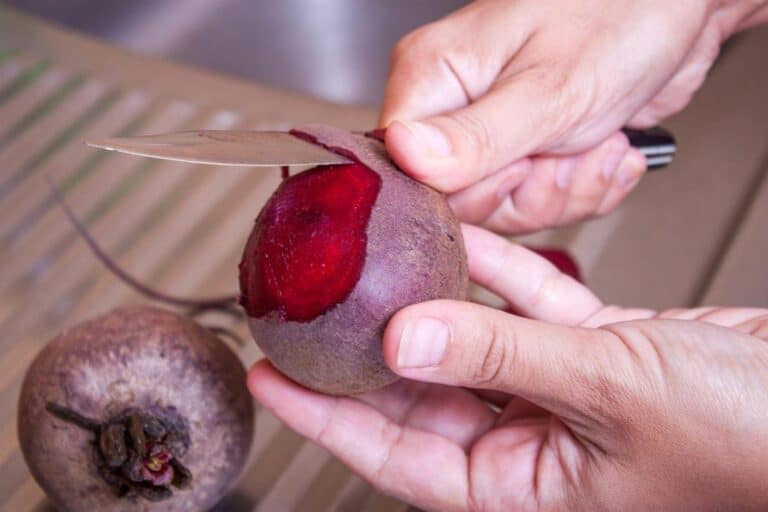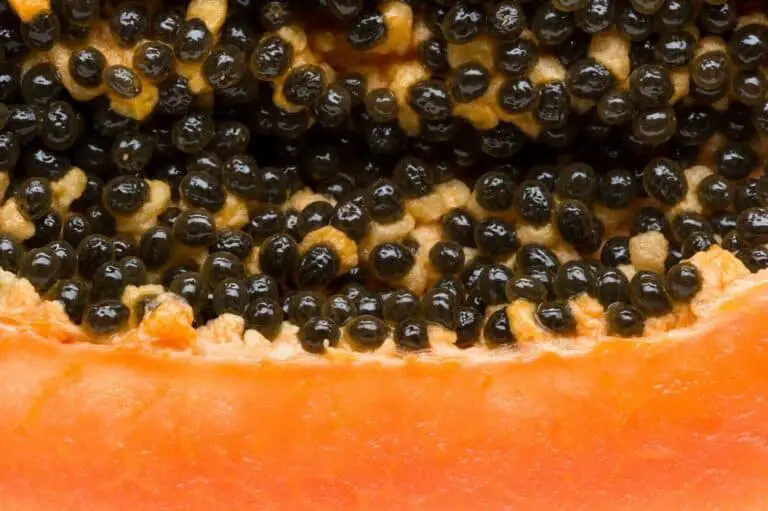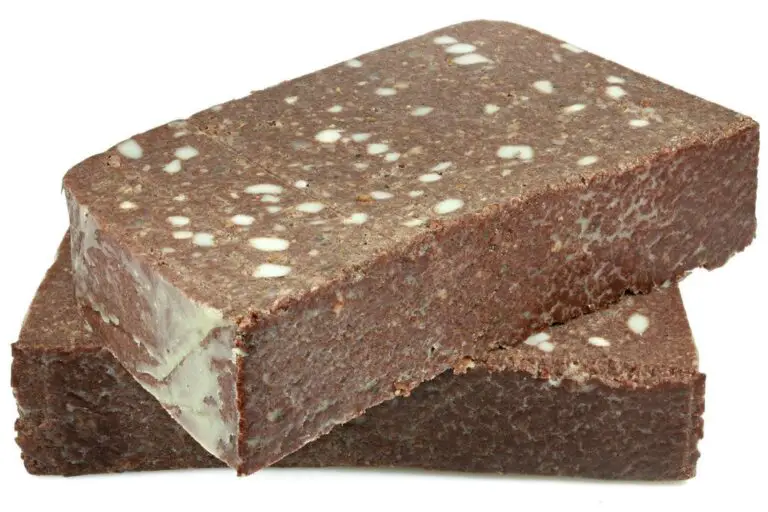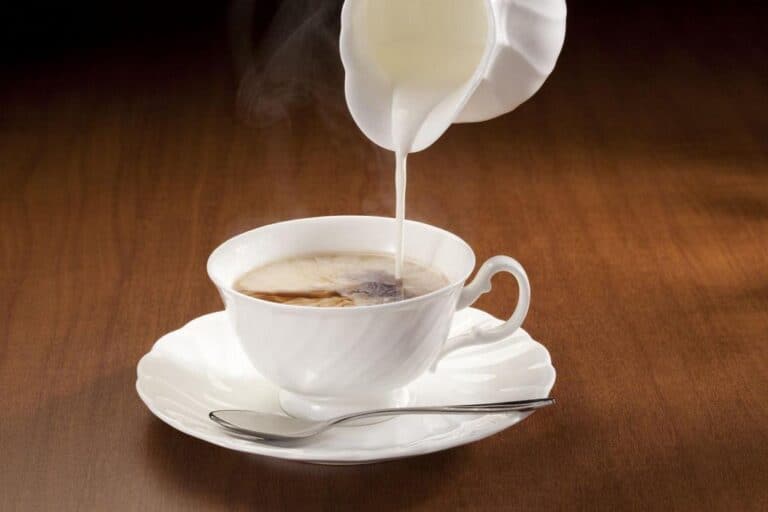Can You Reheat Leftover Noodles Twice? The Dos and Don’ts
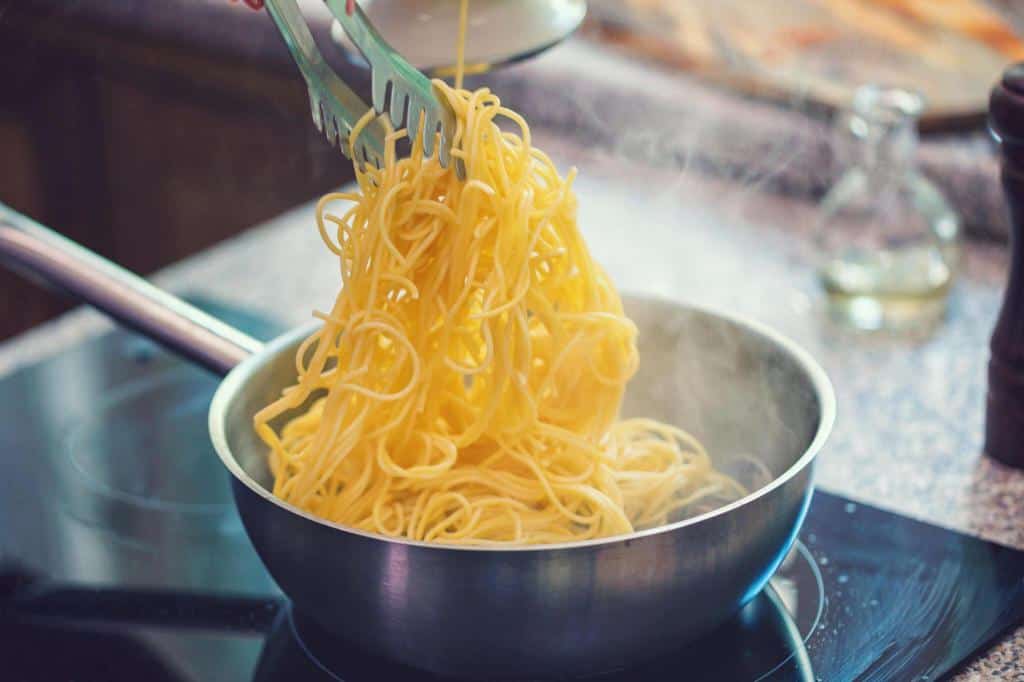
People often have noodles left over in their homes. Whether it’s that big batch of spaghetti you made for dinner or the extra portion from your favorite takeout joint,. We’ve all found ourselves staring at those leftover noodles and wondering if we could reheat them for another meal. After all, why let perfectly good food go to waste?
But here’s where things get tricky: is it safe to reheat those leftover noodles twice? Are there any risks involved? These questions have baffled noodle enthusiasts for years. Today, we’re going to delve into the dos and don’ts of reheating leftover noodles.
In this article, we’ll not only put those concerns to rest but also provide you with some valuable insights on how to make the most out of your leftovers. By understanding the potential risks and following best practices for reheating noodles properly, you can enjoy convenience and peace of mind when you reheat pasta.
So grab yourself a fork as we uncover the secrets behind safely indulging in second-day carbs!
Can You Reheat Leftover Noodles Twice?
It is generally safe to reheat leftover noodles twice as long as they are stored properly and reheated to a temperature of 165°F (73.9°C). However, prolonged storage and repeated reheating can affect the taste, texture, and nutritional quality of the noodles.
It is important to practice good hygiene when preparing and storing foods. Cool foods quickly after cooking or reheating, and store them cold. When reheating, it is recommended to only reheat the portion you intend to immediately consume and make sure it is piping hot. If you don’t consume reheated food immediately, avoid handling it and return it to the fridge within two hours. If in doubt, throw it out.
Reheating Leftover Noodles: The Dos and Don’ts
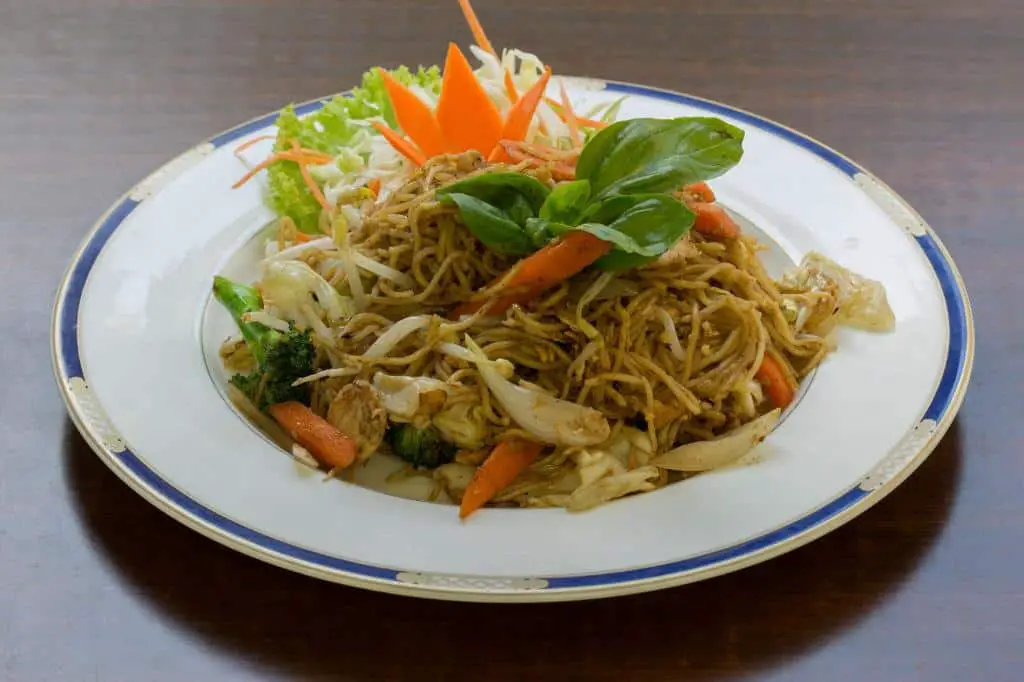
In your quest to master the reheating process, these dos and additional tips serve as your culinary compass. You can choose the gentle steaming approach, add a splash of water, or stir-fry the noodles. These techniques guarantee that your leftover noodles are not just reheated but transformed into a delightful dining experience.
6 Do’s for Reheating Leftovers Noodles
1. Use a Steamer:
- Selecting a steamer ensures gentle reheating, preserving the noodles’ original texture.
- A steamer is ideal for delicate noodle varieties. It prevents excess dryness, delivering a satisfying mouthfeel.
2. Add a Splash of Water:
- When utilizing the microwave, add a small splash of water to the noodles before reheating.
- This simple step helps maintain optimal moisture levels. It prevents the noodles from becoming tough or dehydrated.
3. Stir-Fry Technique:
- Opt for the stir-fry method by tossing noodles in a hot pan with a touch of oil.
- This technique reheats quickly. It also introduces a burst of flavor, revitalizing your leftover noodles.
4. Mindful Microwaving:
- Adjust microwave settings to a lower power level for even reheating without compromising texture.
- Place a damp paper towel over the noodles in the microwave to introduce controlled moisture.
5. Oven Baking:
- Utilize the oven for reheating by placing noodles in a covered dish with a drizzle of broth or sauce.
- This slow, controlled method ensures even reheating. It results in delectably moist noodles.
6. Noodle Refreshment:
- Revive slightly dry noodles by tossing them in a fresh sauce or broth.
- This additional step not only adds moisture but also enhances the overall flavor profile of your reheated noodles.
3 Don’ts for Reheating Leftovers Noodles
1. Avoid Overcooking:
- Maintain a watchful eye to prevent overcooking, which can turn your noodles mushy and unappetizing.
- Stick to recommended reheating times and methods for optimal texture retention.
2. Microwave Without Moisture:
- Never subject your noodles to microwave reheating without any added moisture.
- The absence of moisture leads to dryness, compromising the original flavor and texture of your noodles.
3. Skip Boiling:
- Resist the temptation to reheat noodles by boiling them again.
- Boiling can result in an undesirable sogginess, diminishing the quality of your leftover noodles.
4. Steer Clear of Rapid Temperature Changes:
- Avoid subjecting cold noodles directly to high heat. Allow them to come to room temperature first to prevent uneven reheating and maintain their integrity.
Best Practices for Reheating Noodles Once
To enjoy your leftover noodles without compromising taste or quality, follow these step-by-step instructions:
1. Start by boiling a pot of water: Take a medium-sized saucepan and fill it with enough water to fully submerge the noodles. Place it on the stove, and let the water come to a rolling boil.
2. Add the leftover noodles to the boiling water: Carefully transfer your cold pasta into the pot of boiling water using tongs or a slotted spoon. Gently stir them around to ensure even heating and prevent clumping.
3. Heat for just a few minutes: Let the noodles cook in boiling water for approximately 2–3 minutes, stirring occasionally. Keep an eye on them to avoid overcooking—remember, they’re already cooked from before.
4. Test for readiness: Using tongs, take out a piece of noodle and taste it after draining off any excess hot water carefully (but be cautious not to burn yourself!). The reheated noodles should feel hot throughout. It should still have that desired al dente texture—firm yet tender with slight resistance.
5. Garnish and enhance flavors if needed: Your reheated pasta is now ready to be served! Consider adding some fresh herbs, like basil or parsley. You could also add grated cheese. Alternatively, you could toss it in your favorite sauce before enjoying another delicious meal.
Remember that this method is only suitable for reheating leftovers once. You shouldn’t use repeated reheating cycles, as this may compromise both texture and safety.
Reheating Specific Noodle Dishes
Different noodle dishes may require specific considerations during the reheating process. Let’s explore how to handle some popular noodle-based meals.
1. Spaghetti and Other Pasta Dishes:
- Dos:
- Reheat with a splash of water or pasta sauce.
- Stir occasionally to prevent clumping.
- Cover when reheating on the stovetop.
- Don’ts:
- Avoid overcooking; aim for maintaining an al dente texture.
- Refrain from dry reheating; always add moisture.
| Related: Can You Reheat Pasta Sauce Twice? |
2. Ramen:
- Dos:
- Reheat with the broth for added flavor.
- Stir gently to separate noodles.
- Microwave with a damp paper towel.
- Don’ts:
- Don’t overheat the broth, as it may become greasy.
- Avoid dry reheating without any liquid.
3. Stir-Fried Noodles:
- Dos:
- Reheat with a bit of oil or sauce.
- Stir-fry on medium heat for even reheating.
- Separate noodles with chopsticks or a fork.
- Don’ts:
- Avoid high heat to prevent sticking.
- Refrain from overcooking, as it may lead to a rubbery texture.
Risks of Reheating Multiple Times
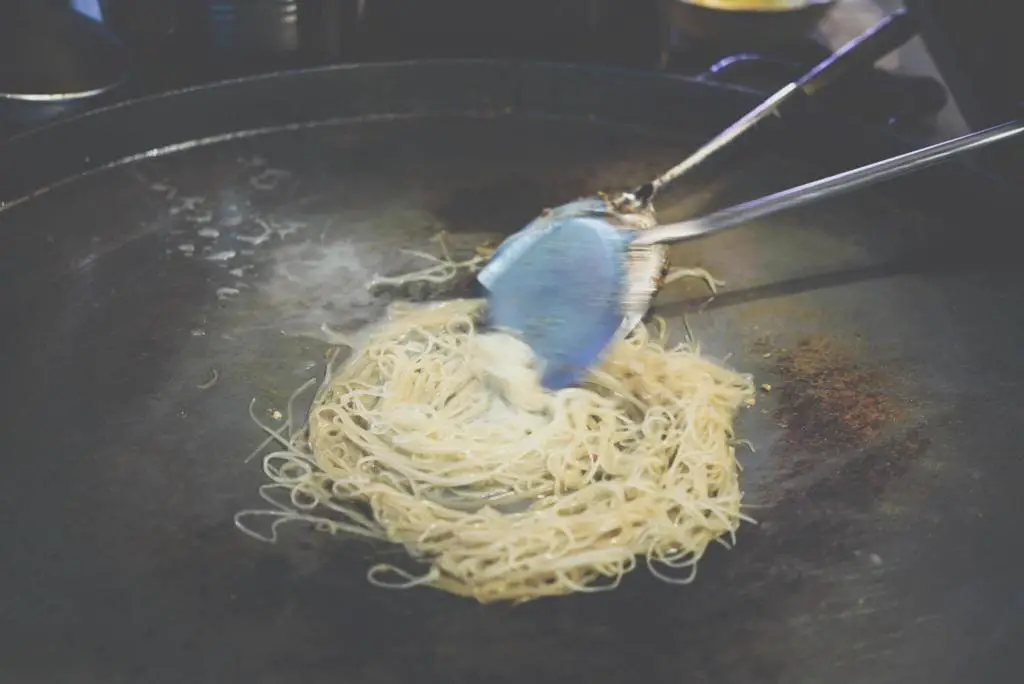
Reheating leftover noodles may seem convenient for a quick meal. However, it’s essential to be aware of the potential risks linked to repeatedly heating and cooling food.
One of the primary concerns when reheating leftovers multiple times is bacterial growth. Each time you reheat food, microbes have another chance to multiply. This raises the risk of foodborne illnesses.
Not only can bacteria multiply during each round of reheating, but there can also be changes in texture and flavor. Noodles that have been reheated too many times often become mushy or rubbery due to the breakdown of starch molecules. The once satisfying chewiness turns into an unappetizing consistency that no one wants to eat.
Additionally, repeated reheating can result in a loss of nutrients. Vitamins and minerals tend to degrade when exposed to heat for extended periods of time. By continually subjecting your leftover noodles to high temperatures, you could be diminishing their nutritional value as well as their taste.
To ensure both your safety and enjoyment while minimizing waste, it’s best not to rely on constantly reheated leftovers. Instead, consider choosing appropriate portion sizes. Store uneaten portions separately from sauce or broth until ready for consumption. This will help preserve freshness and avoid unnecessary health risks.
Danger Zone Temperature: Importance of Keeping Cooked Pasta within a Specific Temperature Range
One crucial factor to consider when it comes to reheating leftover noodles is the danger zone temperature. The danger zone refers to the range of temperatures between 40°F (4°C) and 140°F (60°C) in which bacteria thrive and multiply rapidly.
Food left within this temperature range for an extended period becomes a breeding ground for harmful microorganisms. This increases the risk of foodborne illnesses.
To ensure the safety of your cooked pasta, it is important to keep it either below or above this danger zone temperature. When storing leftovers, refrigerate them promptly after they have cooled down enough. Ideally, do this within two hours if the room temperature is over 90°F (32°C).
Putting your cooked noodles inside airtight containers or zip-lock bags will further help prevent cross-contamination with other foods in your fridge.
Alternative uses for leftover noodles: Repurpose Your Leftovers in Delicious Ways!
Don’t limit yourself to reheating those leftover noodles over and over again. Instead, let your creativity run wild by exploring alternative uses for these pasta remnants. Not only will it add a touch of variety to your meals, but it can also save you from the monotony of eating the same dish repeatedly.
One innovative way to repurpose cold pasta is by incorporating it into salads. Pasta salads are not only refreshing and nutritious but also incredibly versatile. Toss your chilled noodles with fresh vegetables and protein, such as grilled chicken or shrimp. Add a flavorful dressing of your choice for a light yet satisfying meal. This simple transformation can turn yesterday’s dinner into today’s delectable lunch, packed with vibrant flavors.
If you’re craving something warm and comforting instead, consider turning those leftovers into an exciting stir-fry dish. Simply sauté some garlic and vegetables in a hot pan before adding your cold noodles. Season it with soy sauce or other condiments, like chili oil or teriyaki sauce, for an Asian-inspired twist. The result? A quick and easy meal that tastes entirely different from its original form.
Remember, when repurposing leftover noodles, don’t be afraid to experiment with different ingredients and flavors! These creative alternatives prove that there are endless possibilities beyond just reheating stale pasta. They allow you to enjoy every bite without feeling like you’re eating repetitive leftovers.
Conclusion
In conclusion, reheating leftover noodles can be safe and enjoyable if done properly. By following a few key guidelines, you can enjoy your leftover noodles without compromising your health.
First, store leftover noodles in an airtight container in the refrigerator within two hours after cooking. This helps prevent bacteria growth and keeps the noodles fresh for future use.
When it comes to reheating, avoid doing it more than once. It may be tempting to reheat leftovers multiple times to avoid waste. However, doing this increases the risk of bacterial growth and decreases the quality of the noodles. Instead, only reheat what you plan on eating immediately, and discard any remaining portions.
To ensure proper heating, use a microwave or stovetop method that evenly distributes heat throughout the noodles. Stirring occasionally while reheating also helps distribute heat more evenly.
Lastly, always remember to trust your senses when deciding whether or not to eat reheated leftovers. If something smells off or has an unusual texture, it’s best to err on the side of caution and discard it.
By following these guidelines and being mindful of food safety practices, you can confidently enjoy reheated leftover noodles without worrying about compromising your health. So go ahead and savor those delicious pasta dishes even after they’ve spent some time in the fridge – just make sure you do so safely!

